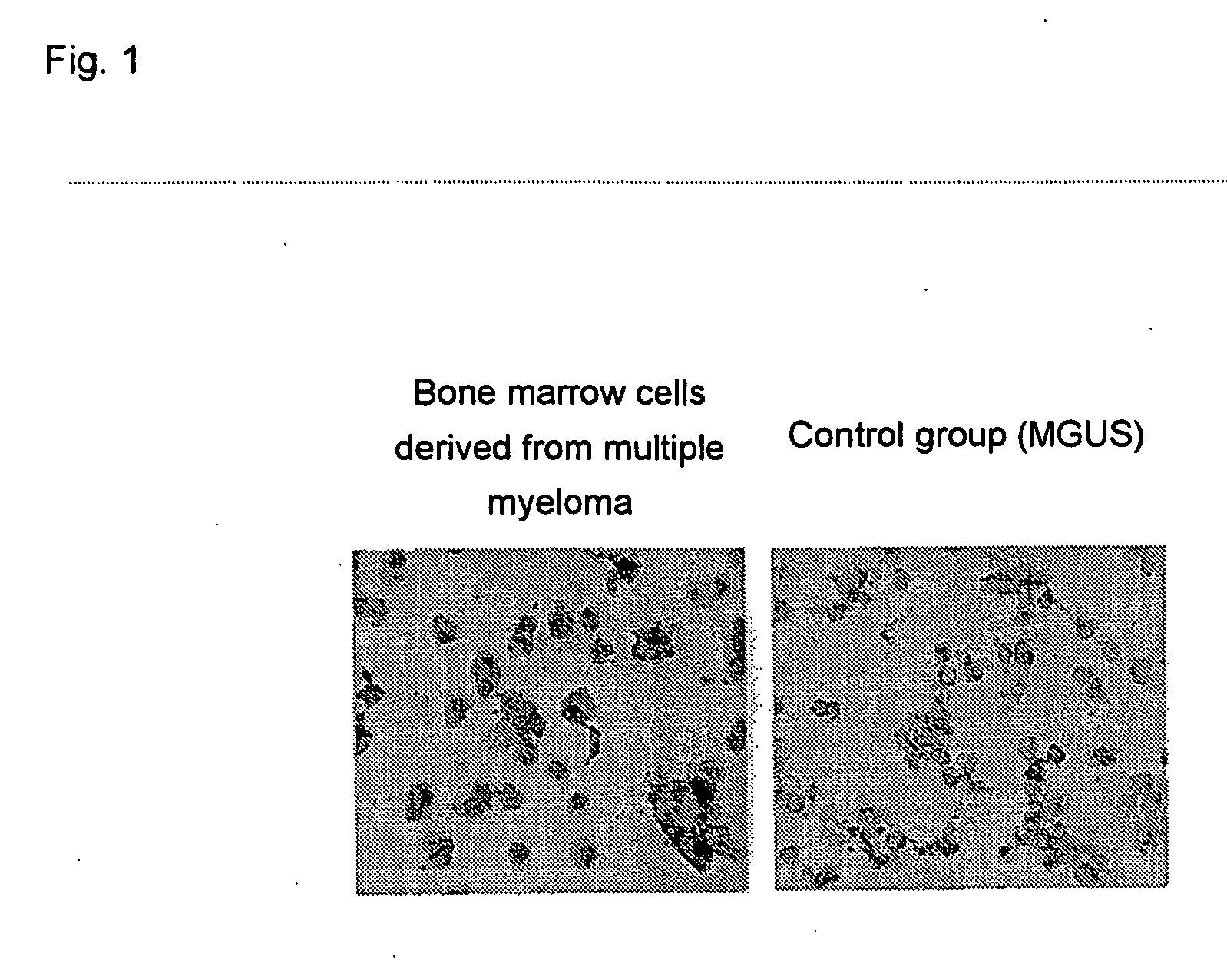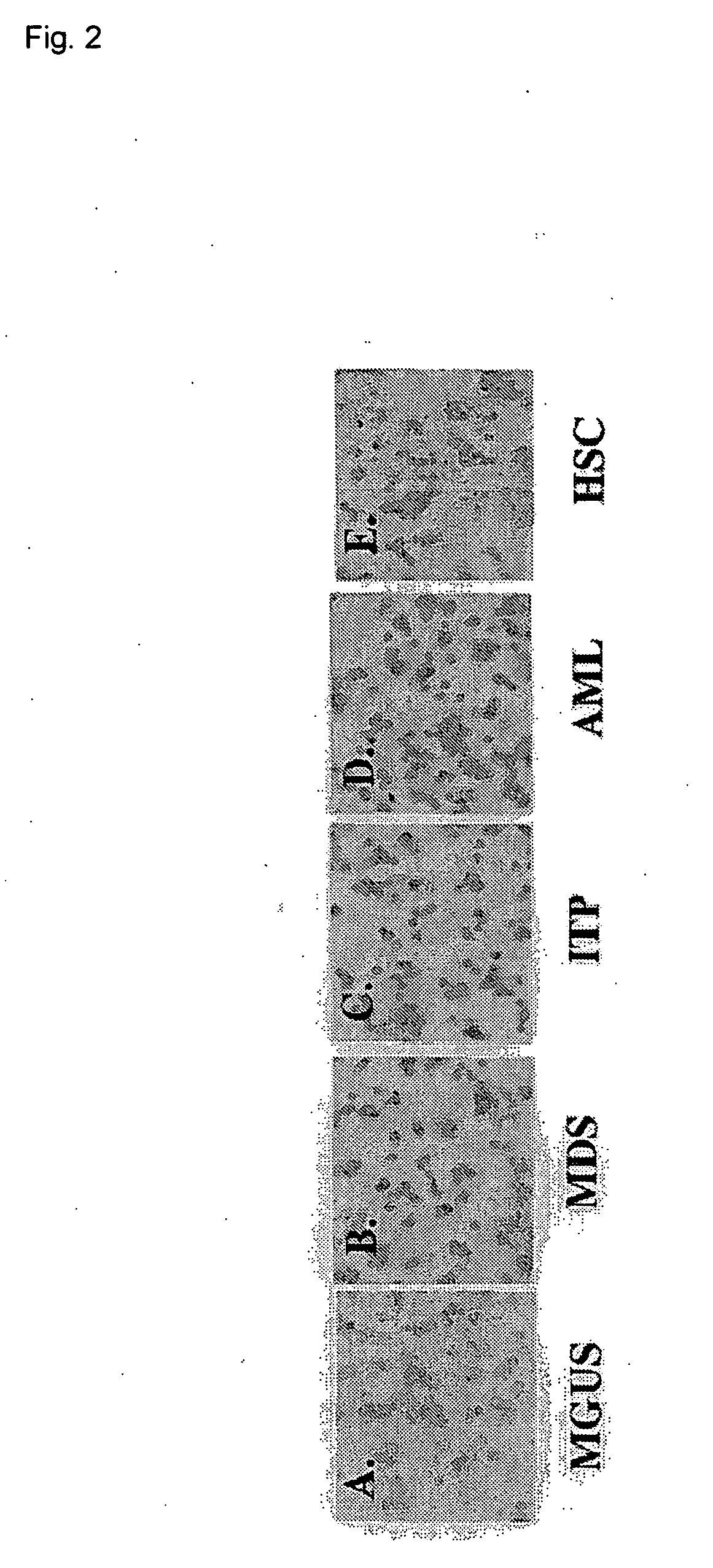Method of inhibiting production of osteopontin
a technology of inhibiting the production of osteopontin and osteopontin, which is applied in the direction of biocide, antibacterial agents, drug compositions, etc., can solve the problem that not many compounds have the inhibiting effect of osteopontin, and achieve the effect of preventing and treating diseases
- Summary
- Abstract
- Description
- Claims
- Application Information
AI Technical Summary
Benefits of technology
Problems solved by technology
Method used
Image
Examples
synthesis example 1
[0049] Synthesis of [0050] 5-(4-chlorophenyl)-6-[4-(methylthio)phenyl]-2-(2-pyridylmethyl)-2H-pyridazine-3-thione methanesulfonate [0051] Synthesis of [0052] 5-(4-chlorophenyl)-6-[4-(methylthio)phenyl]-2-(2-pyridylmethyl)-2H-pyridazin-3-one
[0053] Potassium carbonate (525 mg, 3.78 mmol) and 2-picolylchloride hydrochloride (300 mg, 1.83 mmol) were added to a solution of [0054] 5-(4-chlorophenyl)-6-[4-(methylthio)phenyl]-2H-pyridazin-3-one (500 mg, 1.52 mmol) in N,N-dimethylformamide (10 mL), followed by stirring at 80° C. for 12 hours. Chloroform (50 mL) was added to the reaction mixture. The mixture was washed successively with water and saturated brine, and was dried over anhydrous sodium sulfate. The solvent was distilled off under reduced pressure. The residue was isolated and purified by column chromatography on silica gel (ethyl acetate / hexane=1 / 1 to 2 / 1) to afford the title compound as a slightly-yellow amorphous (623 mg, 97.5%).
[0055]1H-NMR (CDCl3) δ: 2.45 (3H, s), 5.58 (2H,...
synthesis example 2
[0071] Synthesis of [0072] 5-(4-chlorophenyl)-6-[4-(methylthio)phenyl]-2-(3-pyridylmethyl)-2H-pyridazin-3-one methanesulfonate
[0073] Following the procedure of Example 1-3) and conducting crystallization from methanol-ether, the title compound was afforded as a slightly-brown crystalline powder (268 mg, 96.5%) from 5-(4-chlorophenyl)-6-[4-(methylthio)phenyl]-2-(3-pyridylmethyl)-2H-pyridazin-3-one (226 mg, 0.583 mmol) and 1 mmol / mL methanesulfonic acid-dioxane solution (0.59 mL, 0.59 mmol).
[0074] Melting point: 184.4-187.1° C.
[0075]1H-NMR(DMSO-d6)δ: 2.35 (3H, s), 2.45 (3H, s), 5.53 (2H, s), 7.06 (1H, s), 7.10 (2H, d, J=8.6 Hz), 7.17 (2H, d, J=8.6 Hz), 7.25 (2H, d, J=8.6 Hz), 7.44 (2H, d, J=8.6 Hz), 7.93 (1H, dd, J=5.6, 8.1 Hz), 8.42 (1H, m), 8.66 (1H, dd, J=1.2, 5.6 Hz), 8.94 (1H, d, J=2. 0 Hz).
[0076] IR(KBr) cm−1: 1665, 1227, 1212, 1194, 1156.
example 1
Immunocytochemistry for Osteopontin
[0077] The expressions of osteopontin in bone marrow cells collected from three typical multiple myeloma patients were studied by an immunocytochemical procedure making use of the avidin-biotin-peroxidase method. As the control, bone marrow cells from five patients with different hematologic diseases including monoclonal gammopaties with uncertain significance (MGUS: an increase in a monoclonal immunoglobulin is observed, but not to such an extent as meeting a diagnostic standard for multiple myeloma) were usued. Bone marrow cells were isolated by density-gradient centrifugation. Bone marrow cells (1×105) derived from each patient and prepared from the isolated bone marrow cells were fixed with Cytospin 2 (Shandon Soutern Products Ltd., Cheshire, UK) on a glass slide. The slide was stored at −80° C. until use. A mouse anti-human osteopontin monoclonal IgG antibody (4C1) prepared by Kon, et al. (J. Cellular Biochemistry, 84, 420-432, 2002) was used...
PUM
 Login to View More
Login to View More Abstract
Description
Claims
Application Information
 Login to View More
Login to View More - R&D
- Intellectual Property
- Life Sciences
- Materials
- Tech Scout
- Unparalleled Data Quality
- Higher Quality Content
- 60% Fewer Hallucinations
Browse by: Latest US Patents, China's latest patents, Technical Efficacy Thesaurus, Application Domain, Technology Topic, Popular Technical Reports.
© 2025 PatSnap. All rights reserved.Legal|Privacy policy|Modern Slavery Act Transparency Statement|Sitemap|About US| Contact US: help@patsnap.com



